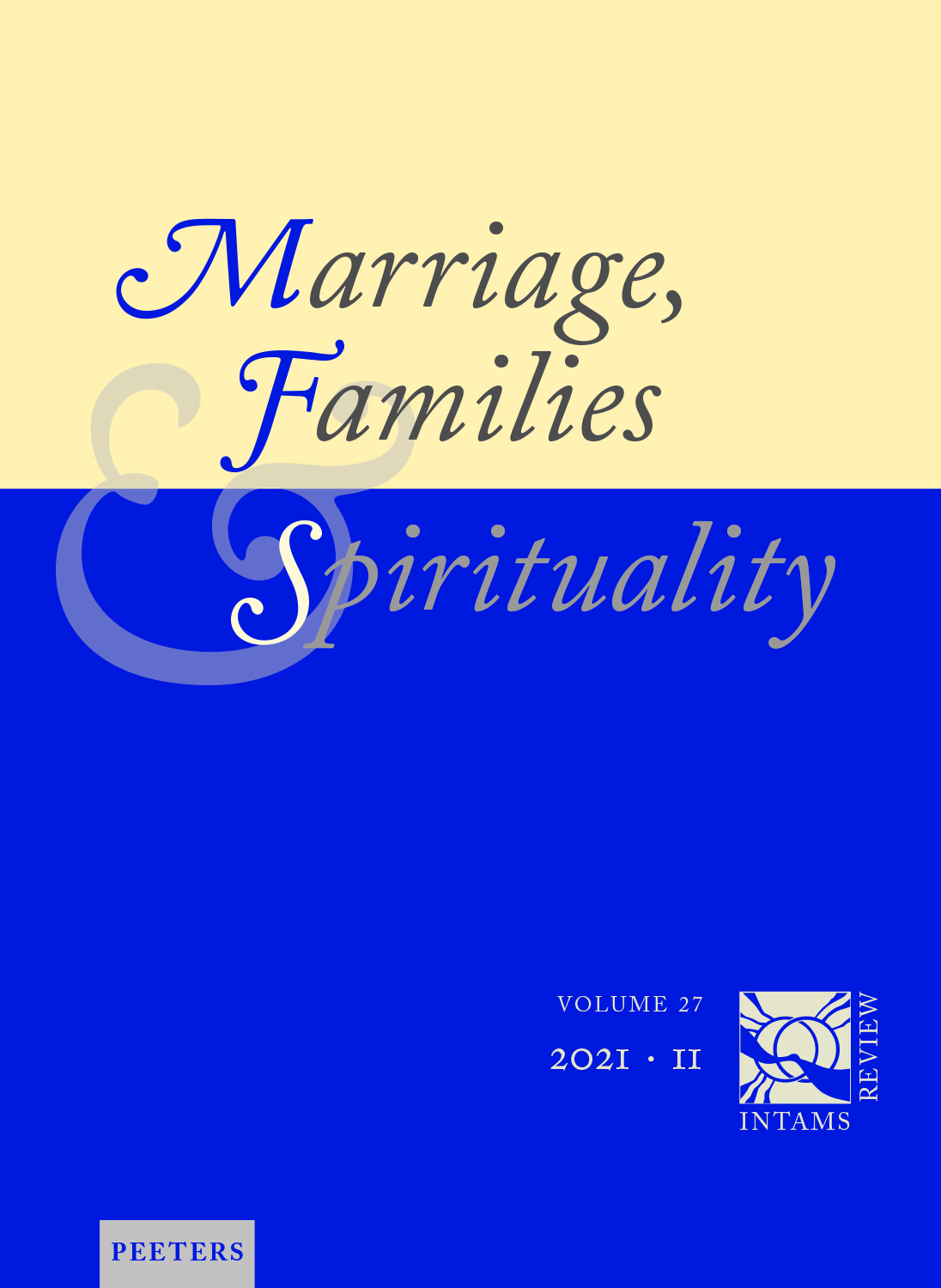 previous article in this issue previous article in this issue | next article in this issue  |

Preview first page |
Document Details : Title: Ehe- und Weihesakrament in der Heilssendung der Kirche Author(s): KNIEPS-PORT LE ROI, Thomas Journal: Marriage, Families & Spirituality Volume: 4 Issue: 1 Date: Spring 1998 Pages: 62-74 DOI: 10.2143/INT.4.1.2014779 Abstract : In the Catholic Church marriage and holy orders mark out two states of life which, though mutually exclusive on the grounds of disciplinary regulations, are both sacraments. The present article is concerned with a common fundamental understanding of the sacramentality of marriage and holy orders, for the purpose of showing both the particular specificity and the relatedness of each way of life. In contemporary theology since Vatican II the Church has been seen as the fundamental sacrament (Grundsakrament) and the individual sacraments are understood as actualising the living consummation of the Church. Fundamental to this conception is the location of the sacraments in salvation history, whereby they come to stand in a direct relation to the universal saving will of God, to the Incarnation and saving mission of Jesus Christ and to the Spirit-led foundation of the Church. Thus in the sacraments the Church finds an expression of the essence of her mission to make present the eschatologically victorious and irreversible self-communication of God in Jesus Christ and promise it to men. Since the sacraments always promise the salvation of God to the individual person in his concrete life-situation, the question is raised as to why salvation is promised to the particular persons who, be it in marriage or in ordained ministry, are given a particular responsibility in the Church relating to the community. It is shown that in both sacraments the Church is built up and preserved in particular aspects and maintains the identity and integrity of her saving mission: in holy orders she affirms the ground and the legitimation of her mission in God’s saving initiative and authority, in marriage she affirms the manner of fulfilment of this mission in devoted love. The promise of salvation which is present in holy orders and in marriage contributes thereby in the same measure to the holiness of the Church, which actually consists in the subjective holiness of those who fulfil the priestly vocation or live the community of marriage. Just as the ministry loses nothing of its holiness if the minister performs his task sinfully in the individual case, though the Church would no longer be holy if all her ministers were sinful, so it is with marriage: the married life of the baptised stands under the real and permanent promise of salvation even if the married couple fall way short of that love which, according to Ephesians 5, is the love with which Christ loves the Church. If there was not the truly uniting love of marriage, the Church could not fulfil her mission of salvation. Hence it follows that we can live up to the objective sacramental promise of salvation only by constant striving and in general by a lifelong process of growth. On the basis of these theological considerations, there follow two concrete conclusions for the ecclesiastical ordering of both sacraments. Firstly, the more it is true that marriage and holy orders bear the salvation mission of the Church in mutual complementarity, the less can any ground be found for both not to be entrusted to one and the same person. Secondly, we should not on the basis of this argument contrast the married and unmarried states and speak of their complementarity for the saving task of the Church. Unlike marriage and orders the unmarried state does not belong as such to the sacramental essence of the Church, but points to the eschatologically as yet unfulfilled dimension of salvation. |
 |


